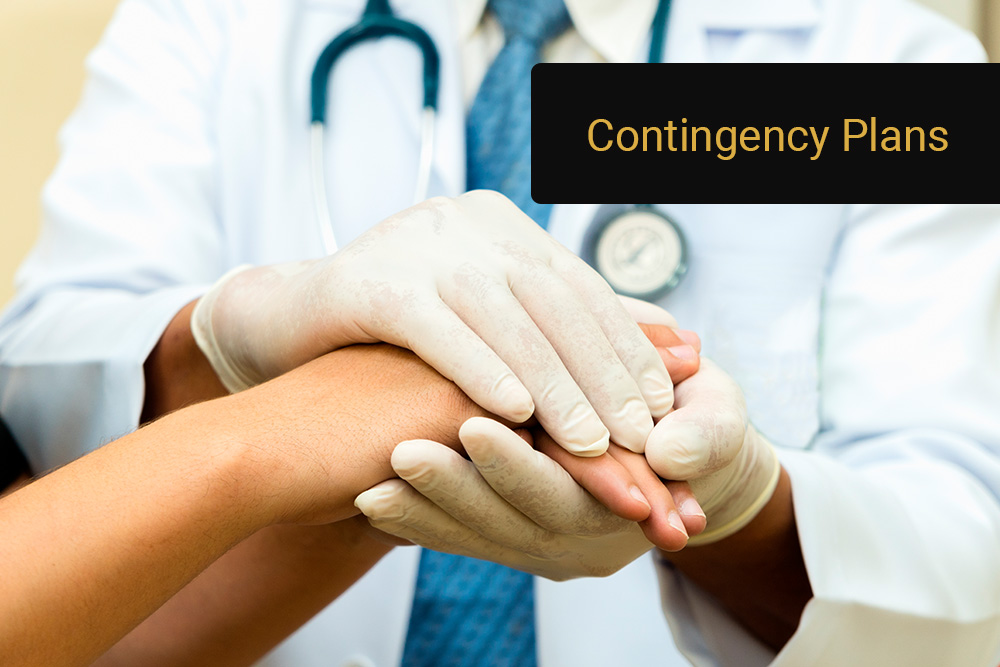Family emergencies can be an uncomfortable topic as no one wants to imagine their family potentially being in danger. However, it’s important to have a plan in place if something unexpected should happen. Ideally, you’ll never have to use it, but it’s far better to have one you don’t need than to need one you don’t have.
If you still need to set up an Emergency Preparedness plan for your family, now is the perfect time. Let’s take a look at how to set one up, what to include in the plan, and some other tips to keep in mind to keep your family safe and protected.
Before You Start
There are a few things you’ll want to consider before you start creating a family emergency plan. The first is to determine the closest safe location for everyone to meet if everyone needs to leave the house. It could be a close friend or relative’s home nearby or, depending on the circumstances, a more public location like a park or a library.
You’ll also want to write down any medical conditions that family members suffer from that might affect your plan. Suppose your first idea involves meeting at your brother’s apartment, but it’s a third-story walkup with no elevator. In that case, you may need to reconsider if an elderly family member would be going with you and would have problems walking up three flights of stairs.
Another good idea is to divide a list of potential emergencies into two categories based on whether family members should leave the house immediately (such as a fire) or remain in place and wait for help (like a medical situation). Although these may seem like common sense, children might need to learn the difference. Even adults can start to panic in an emergency situation and not think clearly.
Things to Include in Your Family Safety Plan

A family or personal safety plan should consist of multiple scenarios and how to best respond to each one. For example, a fire and a tornado are both serious emergencies, but each one requires a very different response. Depending on where you live, you may be more prone to certain emergencies than others, like a Californian who would be much more likely to experience an earthquake than a hurricane.
For emergencies that take place inside the home, like fires, you’ll want to figure out the best way to leave the house, where the family will meet up, and how you’ll communicate with each other in the event of an emergency. For most family members, that will probably involve cell phones, but older people, younger children, and even some adults who don’t carry mobile devices or leave them on silent can be difficult to reach.
Contingency Plans

Since there is always the possibility that your primary plan won’t work due to the specific nature of the emergency, it’s always a good idea to have at least one backup plan. For example, if the first plan involves driving to a relative’s house a few miles away, but the car won’t start, the backup could be a neighbor’s house or to meet at a nearby bus stop so you can all travel together.
This applies to situations both inside and outside your home. In the event of a fire that blocks both the front door and the back, you’ll want to determine which window will provide the easiest escape route should the need arise.
Sample Plan

Here’s a sample emergency plan that can help you build one of your own that will best suit your family’s needs.
“In the event of an emergency where we have to leave the house, we’ll all meet at Grandma Henderson’s house (211 Springer Road). If that won’t work, our backup meeting place is Aunt Isabelle’s apartment (714 Chestnut Lane #4B).
“Mr. Robert Johnson (Dad) 702-555-5555 Accountant for the State of Nevada (with the rest of the family members’ names, phone numbers, and employers or school names listed below).
“In the event of an emergency, please be aware that our son Johnny, age 8, is allergic to Amoxicillin and pistachios. The family dog, a German Shepherd named Rover, will probably be in the backyard.”
After the Plan is Complete
Once you’ve completed the plan, it’s a good idea to write it up and the alternatives you’ve come up with and keep multiple copies, ideally one for each family member that they can carry in a purse or wallet. A copy should also be given to any friends or relatives who are involved in the plan as well, so they’ll remember what they need to do to help.
If you have children, it’s a good idea to walk them through the plan in simple terms, especially if they’re young enough that they didn’t have any input when the plan was being drafted. It’s also recommended to start the conversation by explaining that you care about their personal protection and you aren’t telling this to scare them or because you think something will happen soon.
Additional Tips

It’s a good idea to update your family’s emergency preparedness plan on a regular basis, even if it’s once a year. It should also be updated if anything changes, like getting a new pet, a child going off to college in another state, or especially if a new allergy is discovered.
It is also highly recommended to take first aid classes that teach CPR and how to stop bleeding, among many other things, which can prevent an accident from becoming an emergency or, at the very least, stop it from getting any worse while you’re waiting for paramedics to arrive.
Having a bag of emergency supplies, like a first aid kit, phone chargers, a copy of the Emergency Preparedness plan, bus tokens or a roll of quarters, insurance or medical documents, and other items can be invaluable in a situation where everyone has to leave quickly. It can be stored in your home or your vehicle.
Finally, undergoing a home safety assessment can help prevent in-home emergencies before they start. And, ensuring multiple fire extinguishers are easily accessible in different parts of the house can help stop flames from spreading.
These are just a few ideas to get you started when coming up with your family’s safety plan. Hopefully, you’ll never have to implement it, but it’s still a good idea to have one, just in case. An emergency can be a terrifying thing, especially when it’s happening to someone you love, but by preparing in advance, making a plan, and taking first aid classes, you can help prevent a situation from getting worse and make sure your family stays as safe as possible. Good luck!

